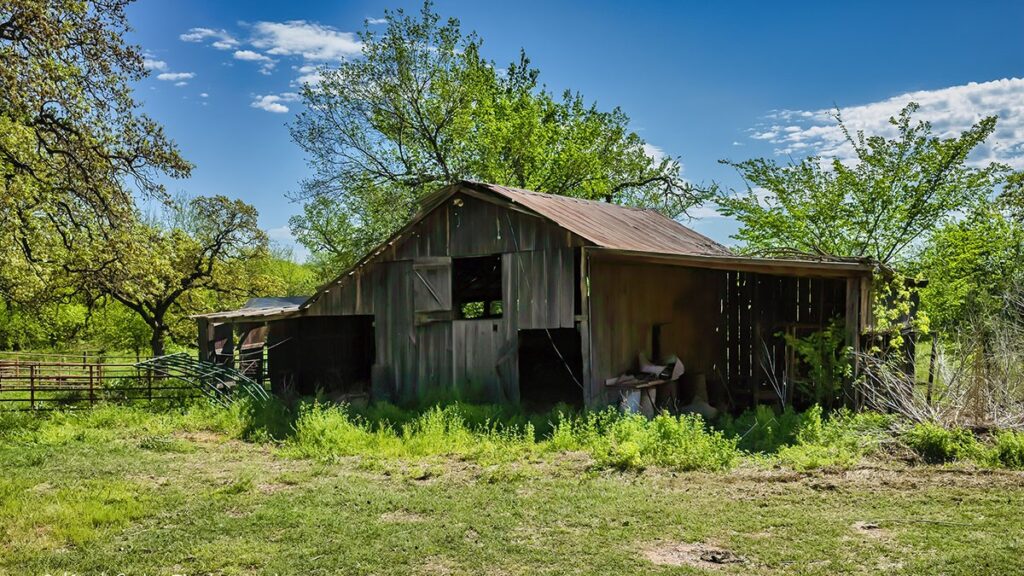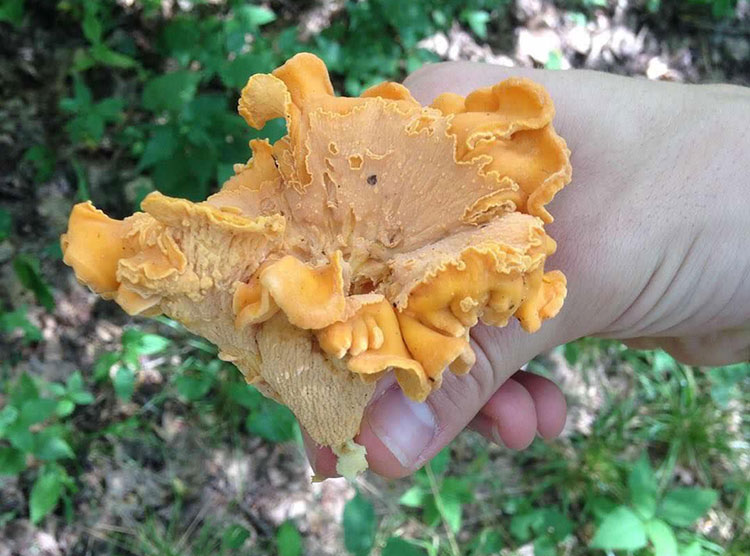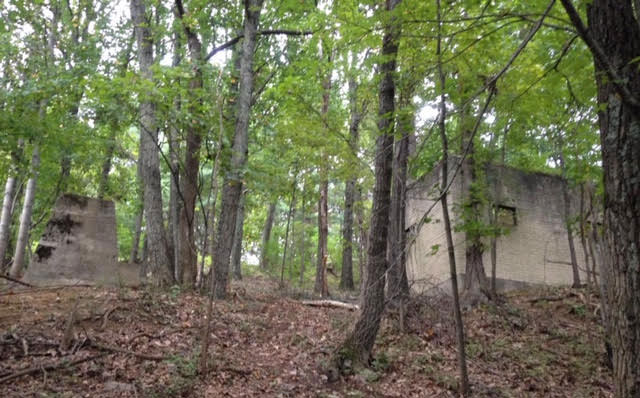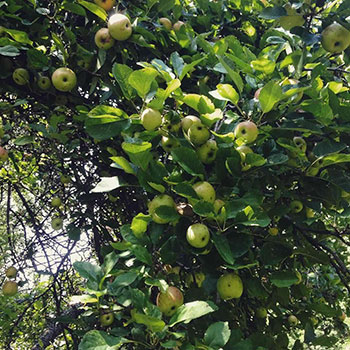
Who doesn’t love finding something old and abandoned? There is something innate in all of us that loves the process of discovery — of exploration. It’s why we are so enthralled by stories of buried gold, lost history, and forgotten civilizations.
Well, if you know what to look for, you may be able to find a form of buried treasure around your home. That is, you may be able to find and plunder abandoned gardens whose original owners are long gone.
Finding a garden that has long ago been forsaken, and that which no longer has an owner, is a fun way to discover the treasure of food. The sites where you find them are usually interesting onto themselves, and can be a great source for photography – like these old abandoned greenhouses.
Though these sites are uncommon, they can be a fun to look for, and in a survival situation, knowing what they look like could save your life. Consider it a basic form of food independence.
So, let’s take a closer look. When it comes to abandoned gardens, where do we even begin? If you were traveling through an abandoned area or actively foraging for food, could you find old gardens? If so, what exactly would you find?
Abandoned Gardens as Survival Gardens
Abandoned gardens that still hold vegetable and fruit plants are great places to look for food in a survival situation. If the season is right, and your eyes are sharp, you could find plants that are not only producing food for immediate consumption, but are also able to be transplanted at your home or bug out location.
What You Can Find In Abandoned Gardens
What you are most likely to find at an abandoned garden is perennials. It’s highly improbable that you’ll find an entire plot full of lettuce. Blueberry bushes, blackberries, apple trees, peaches, and perennial vegetables are more likely. Other items to look for include persimmon trees, cherries, pears, daylily, asparagus, rhubarb, and strawberries. And, though they’re not perennials, you may have some luck finding plants such as watermelon, sunflowers, squash, zucchini, cantaloupe, cherry tomatoes, and regular tomatoes.
The seeds from these plants are routinely tossed in compost piles, carried by birds such as chickens, stolen by squirrels, and so on, leading to “volunteer” plants popping up all over the place (often in unexpected locations). Just this past spring I found zucchini growing throughout my yard – I suppose from the chickens – and some of the healthiest looking watermelon plants I’ve ever seen growing out of my compost pile.

I’ve been looking for this form of wild food for so long that it’s second nature now. When I’m out wandering the neighborhood, out for some exercise, or running errands, I always notice wild and semi-wild food. I know who doesn’t pick their rhubarb, and who can’t eat all the fruit off their trees.
Get in the habit and you’ll start to notice what can survive utter neglect; and ultimately, could help you survive utter devastation.
Annuals will be spotty — I don’t think I’ve ever seen a wild green bean or wild broccoli. Lettuce, however, is a different story, readily spreading from season to season. Tomatoes also sprout volunteers. Those would likely devolve back to smaller cherry tomatoes, but they would still bear edible fruit for many generations. Squashes can carry on, either sprouting new vines where the old plant rots, or after seeds are scattered by animals. Asparagus beds are very distinctive (as in, easily spotted) and can survive many years without any care. The same goes for bramble berries.
Also, in northern climes, rhubarb easily survives for years. The practiced eye can even estimate the placements of old homesteads on the east coast by the rhubarb beds that remain to this day. Finally, fruit trees of course survive many years.
Where to Look for Abandoned Gardens
There are a few places that you’ll be likely to find these abandoned plots.

The first and foremost would be still-standing dilapidated homes. You can occasionally find these while you’re out hiking or exploring. There’s likely some of them within your local town as well.
You just have to be very careful not to get slapped with a trespassing charge pre-collapse, but post-SHTF, few people would care that you’re tromping around around an abandoned house.
We’ve talked about bugging out to national parks, but national parks are another area in which to keep your eyes open. The history of the creation of national parks is rather distressing to some families, who due to eminent domain have been uprooted — but their gardens haven’t.
Ironically, the more poverty stricken former tenants of today’s national park land will leave behind the biggest gardens. Even a bulldozer won’t destroy the remnants of a healthy garden.

If you spend any time exploring undeveloped land near your home, you’re likely to come across old apple trees and grapevines that used to be cultivated by those who lived there before. There’s one particular area I used to visit regularly in my region where a series of old apple trees grew next to what must have been a farm up in the mountains. There’s a hiking trail that goes right through them. Keep an eye out for spots like that in your own region.
Then there are locations where you know homes used to be. This is another great place to begin your search for abandoned gardens. Whether a given house was destroyed by sinkholes, floods, rot, demolition, or forest fires, odds are that the plants which were around such a home escaped relatively unharmed. Even in the case of a forest fire, seeds may have escaped unscathed underground.
For one example, near my childhood home, a house and acres of hay were destroyed by a fire set by cigarette-smoking teens. However, an old pear tree right beside the house survived. I gathered pears from it for years afterwards. Keep your eyes peeled when you’re in areas that used to have a home on them, and you may be surprised at what you find.
What to Look For in Your Search

One of the keys to finding abandoned gardens is to look for plants that are not native to your geography. This takes a basic understanding of your local flora, but once you have it, you’ll be able to spot non-native species rather easily.
Ornamentals such as you would see in typical landscaping designs, or even plants that are fruit-bearing that aren’t typical to your area may be signs that you are near the location of an abandoned garden.
Look for landscaping patterns as well. In the wild, plants don’t grow in ranks and rows. If you stumble across an area where things are organized in some form of definitive pattern, then you’ve likely found evidence of human activity. Even better, if you find a fence, take a closer look. If it’s not barbed wire, there may be a garden somewhere in the area.
Remember to try to discern where a home used to be. Looking for fruit trees is a good strategy, or sunflowers, tall enough to be seen easily no matter how overgrown the grass. Seeds will be spread by animals, so check for volunteers around bushes, stone walls, and fences. Garlic can survive abandonment, often expanding to make a nice little garlic patch. So follow your nose as well as your eyes.
Watch the birds. If birds are paying attention to a patch of something, you could possibly find a stand of sunflowers, berries, or corn. Look for infrastructure, like fencing or raised beds or tomato supports. You can also teach your kids your methods. Like training them in hunting and fishing, this kind of foraging lesson is a valuable one.
Further Reading

Though I most certainly wouldn’t base my entire post-collapse survival plans on scavenging abandoned gardens, they do have potential as a food supply, albeit a meager one.
More likely pre-collapse, they’ll be a novelty you discover on a hike. Either way, searching for abandoned gardens can provide its own rewards.
If you are looking for further reading loosely related to this subject, consider Secret Garden of Survival: How to Grow a Camouflage Food Forest and My Bug Out Garden.
Do you have thoughts on the subject? Have you found abandoned gardens in the past? Let us know in the comments below!
Feature Photo Credit: Kool Cats Photography over 14 Million Views The Rundown Barn via photopin (license)
8 comments
Seasonal home / cottage areas would be a good place to forage, if the owners/heirs weren’t there. Pre-scout these areas if possible, noting things like uncut lawns, always closed drapes, doors padlocked from the outside, or lack of recent tire tracks/footprints – good signs of vacation homes. With some luck, maybe hit the jackpot and find a unoccupied survival retreat/BOL where the owners plant every Spring but aren’t around to maintain the garden except a weekend or two a month. I’d hit those quickly after the SHTF, since the owners might already be bugging out to get there. Many fruits/vegtables will continue to ripen after picking, so filling your belly and taking everything you can carry is a good idea. Don’t plan on being able to return later since it might not be unoccupied for long. Like you said, if we determine they have more fruit/crops than they could eat (which is likely, considering we already know they have more houses than they need!), then there’s no harm done. Thanks for the great post.
Unusual as it may sound, check the areas around old deer hunting tree stands. I’ve found quite a few that had wild growing crops of rutabegas, sugar beets, corn, and melons- all growing miles from any roadway. Since finding the first growth of ‘begas, I’ve always kept an eye out for dilapidated tree stands and done a check of the area within shooting distances. Of course, depending on the age of the stand, there could be new growth covering the old shooting lanes, so visualization must be used.
Also, keeping an eye out for old fenced areas that are square, or ‘smaller’ areas, could indicate garden areas of old homesteads. Perhaps even around old root cellars- if you can find them- wouldn’t be too far from garden areas.
Shy III
Interesting subject . Here in the southwest , you can spot abandoned homesteads out in the middle of nowhere by the trees . If the water table is high enough , they will survive and stick out like a sore thumb as they are taller and bigger than the native Mesquite and Palo Verde . Sometimes all that is left of the old homestead is the foundation or half disolved walls ( they were all made of adobe out here as lumber is bad in this climate and would have been hard to get for a pioneer ) . Either way , these places make interesting camp sites and if very remote , may still have artifacts around them . Even if the trees are long dead , its a dead give away of past habitation .
As mention asparagus will not only grow for years but if it is made up with female plants they will spread. That is what happens in my neck of the woods. You will find asparagus growing in ditches along many roads besides the homesteads where they started. Most garden seed is hybridized and they would produce little or no viable seed. What you’ll find will depend on how well they can handle competition with the wild and local flora. Garlic would survive but if the cloves are not separated they are really small. But if the bulblets that come from the top are spread around they need a couple of years to produce cloves. There is a book from 70’s called ‘The One Straw Revolution’ which essentially talks about letting your garden grow wild.
On houses abandoned a couple of decades ago, the large metal items (water heaters, etc.) seem to stick around even in our hot humid climate. Then you have to look for the foundation. The real problem around here is how fast the secondary growth forest canopy can dim out the new forest floor. Tulip Poplars particularly seem to grow like lightning.
I have some experience with this. Near our current home is the site of an old homestead. The house has been torn down and the land abandoned. Last summer, we were able to find potatoes, garlic and what I now understand is asparagus, as well as some very small, neglected strawberries. I knew then the signs of poor soil, and it’s a shame to think how great that garden could have been with a little TLC. When the original owner died, someone moved in for a short time and ruined the place. The garden was almost ignored and heaven only knows what happened to the beehives. We tried very hard to get in touch with anyone that was willing to rent the old homestead to us. But to no avail. Now we know that all the land the old man owned was sold to a developer who will be squeezing over 100 homes on it. It breaks my heart to think that in a year or two, only a small number of us will remember the old homestead.
Just a side thought, tomatoes might not revert back to cherry tomatoes if the variety planted is an heirloom. There are some large heirloom types out there, and if the fruit fell on the ground, you might actually end up with a couple of new plants. I think that learning what vegetables look like if allowed to do their own thing might be as useful as learning how to forage for wild food. There is a fella on YouTube that seeks out abandoned homesteads and buildings, and records his wanderings through the buildings. I’d like to see something like this, but through the abandoned homes’ gardens! Awesome post, thanks!
I still pick horseradish,chives,and two types of berries from my grandparents garden .And no people have lived there for 30 years.Also if the SHTF some of the state owned lands were once old farms and ranchs good places to go to look for herbs and fruits,etc.Just do not get caught taking any off, they have rules against that in my state.
What you said – plus root veggies & maybe dark greens?
I just read something that said the Puritans hated root vegetables because they thought it was “lazy” farming- you just planted potatoes in the ground, and they grew. They were suspicious of anything that didn’t require hard labor every day! I wonder if the same is true of turnips, some carrots?
Some dark greens are more closely related to their wild-weed relatives, so they are more tolerant & hardy… how do okra & kale do?
How about beans?
There would be less-obvious non-vegetables, like rosehips or day-lily tubers.
I saw a youtube video interview with someone’s grandma, she said her Italian parents just threw kitchen cuttings into the front yard… where it would take root and grow into pepper plants, etc. No-work “recycled” farming
(Mushrooms if you knew them VERY well…)